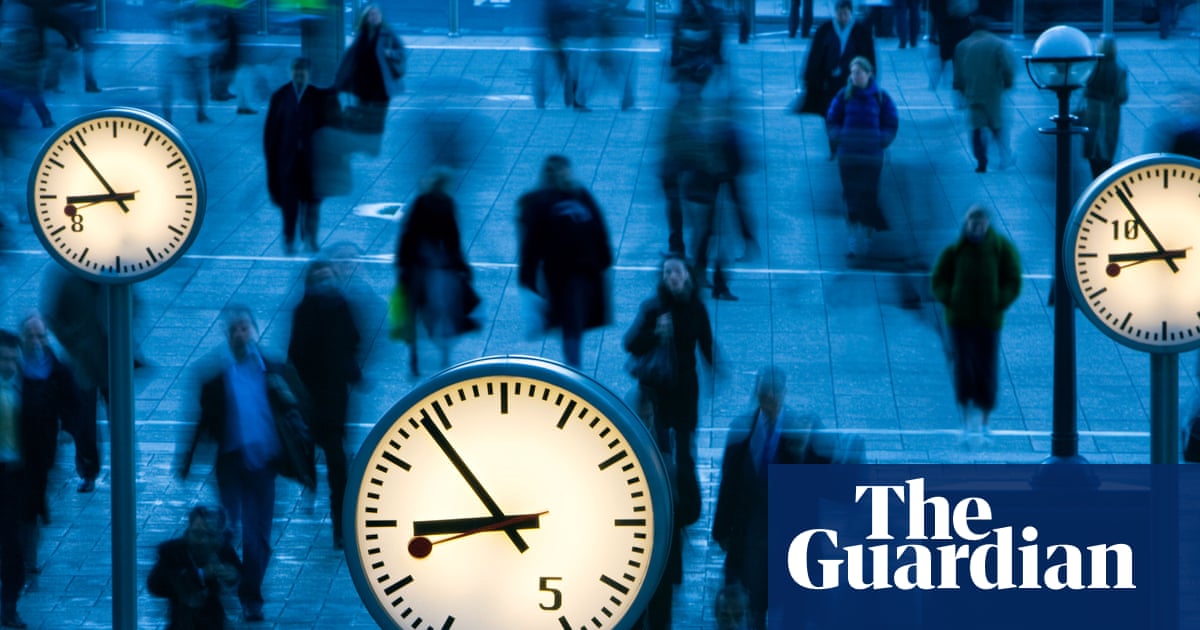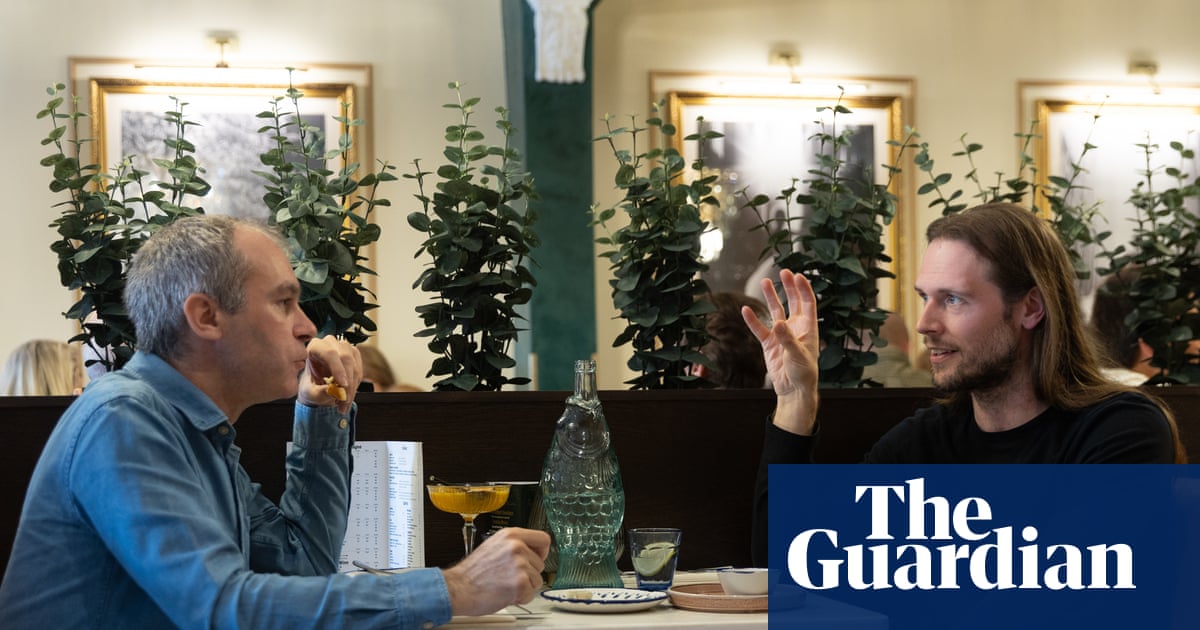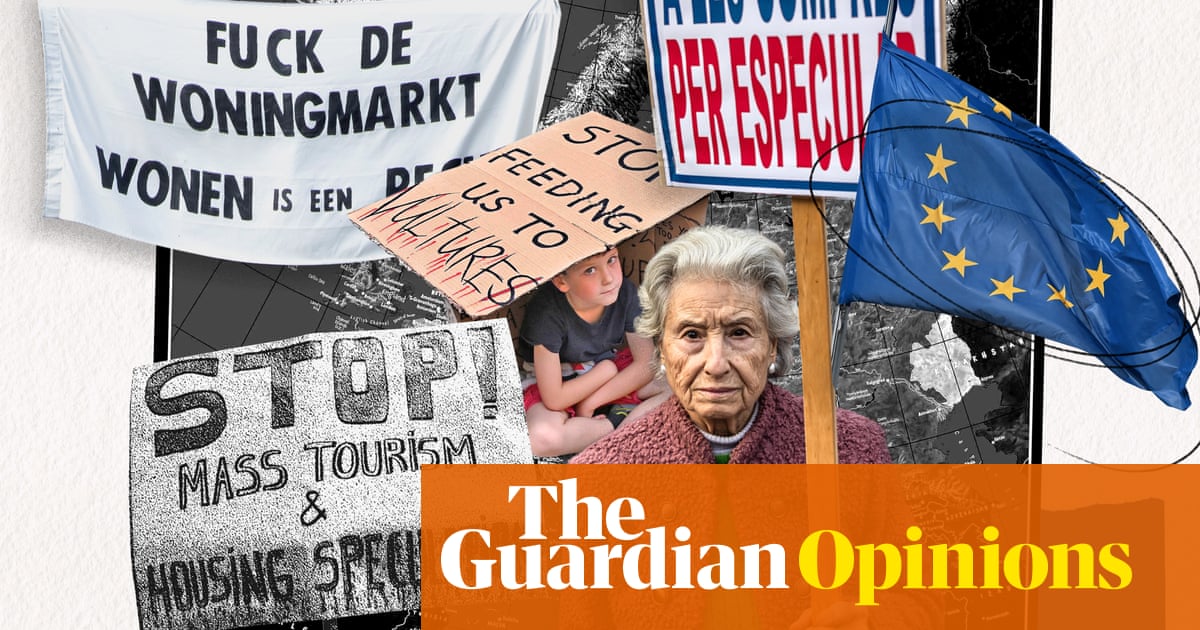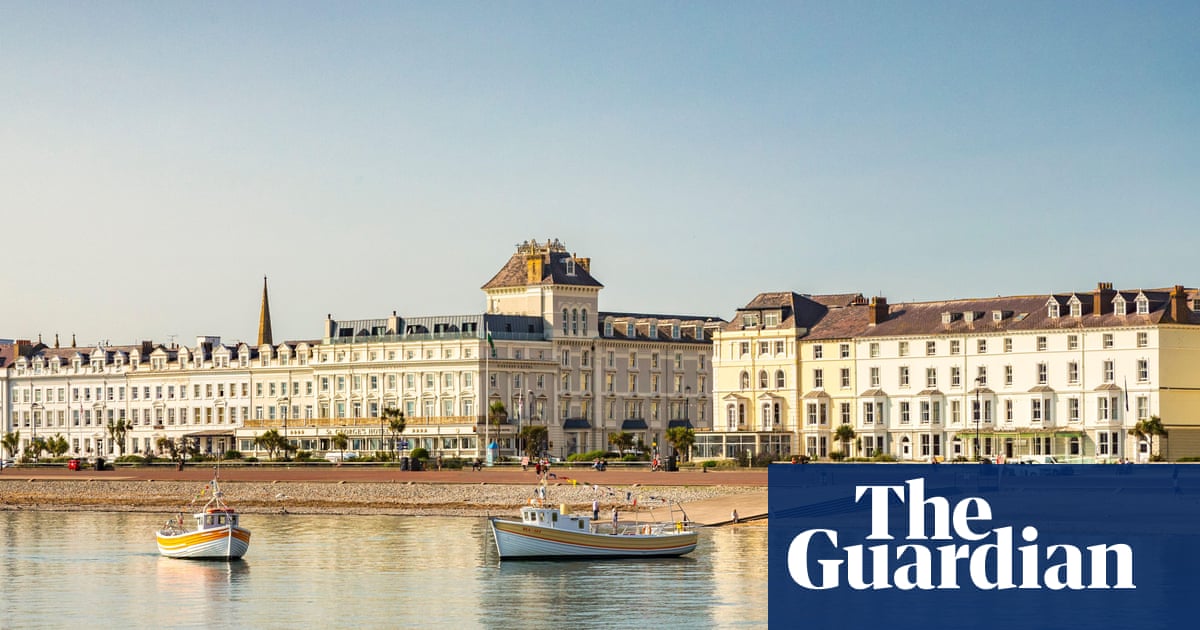On a hot Saturday spring morning, Karabo Mashele urged a group of female cyclists up the hills of a plush Johannesburg suburb. “Come on my ladybugs,” the 32-year-old shouted over the sounds of 4X4 cars overtaking the riders. “You can do hard things!”
Twice a month, Mashele, who only learned to cycle aged 29, leads Girls on Bikes casual rides for up to 25 women in their 20s and 30s, through Johannesburg or Pretoria. On other weekends, she and a core group join longer, mixed gender rides.
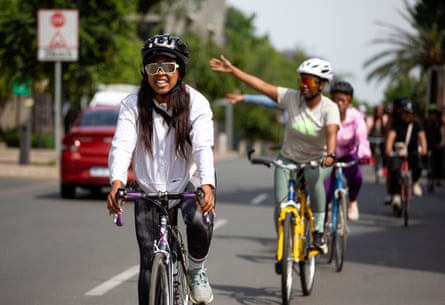
-
Karabo Mashele, the founder of the Girls on Bikes bicycle club, on the streets of Johannesburg.
Johannesburg, with a population of nearly 5 million, is not designed for cyclists or pedestrians, with dense townships and sprawling suburbs connected by highways. Less than 1.5% of the City of Gold’s commuters cycle to work, the majority of them migrant workers from other southern African countries, according to Njogu Morganm who has studied transport in the city. Bikes are usually seen as either an elite hobby or a last resort for the poor.
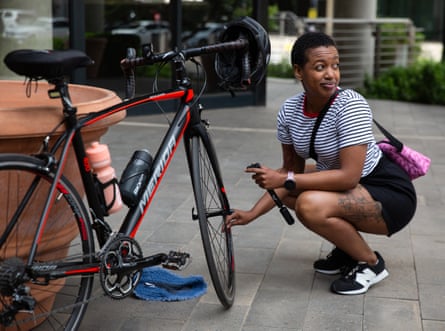
-
One of the members of Girls on Bikes carries out a few repairs to her bike.
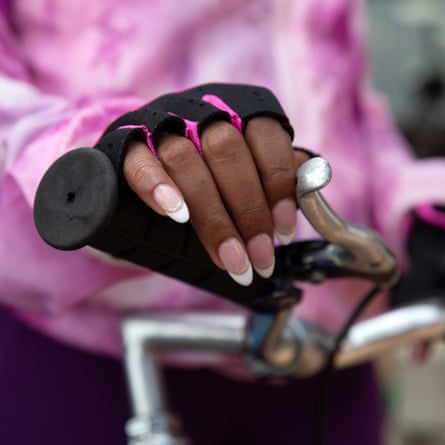
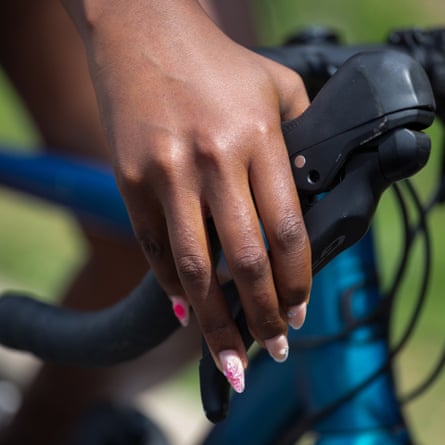
South Africa’s metropolitan areas haven’t changed much since apartheid ended more than three decades ago, with poorer black workers commuting to wealthier areas from the townships into which the white minority regime forced their communities. However, the members of Girls on Bikes and other young cycling enthusiasts are reclaiming the streets of South Africa’s largest city.
This dynamic is something Titi Mashele is acutely aware of. He launched Banditz Bicycle Club in 2018 to find a cycling community and now has a bike shop and runs weekly “Homies Night Rides”. He also encouraged his younger sister Karabo to start Girls on Bikes.

-
‘It is a political statement to see people of colour on bikes, in suburbs’: members of Girls on Bikes stop for a coffee break.
“It is a political statement to see people of colour on bikes, in suburbs. Like right now, in front of us, you see the eyes and how people are looking at us,” Mashele said, as he drove a support vehicle ahead of the 10km Girls on Bikes ride.
Karabo Mashele said she wanted to change the perception of cycling among black South Africans, recalling how children in Soweto thought their group were tourists.
“I spoke in Sotho or Zulu and said, ‘Yes, I’m from here. I’m like you, I’m the same colour as you,’” she said. “It was a little sad, but at the same time I was like, ‘OK, I’ve got work to do.’”
At the other end of Johannesburg’s cycling spectrum is spinning and “Stance culture”. It started with cars – souped up BMWs spun in tyre-burning circles in Soweto in the 1980s, towards the end of white minority rule, often at gangsters’ funerals. It is now a sport, attracting sponsors such as Red Bull.
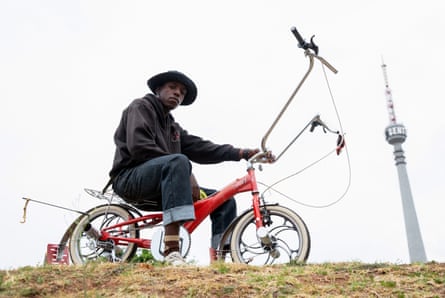
-
Percy Zimuto of the ‘Sentech Croozers’ bicycle club, named after the the Sentech tower in Brixton, Johannesburg.
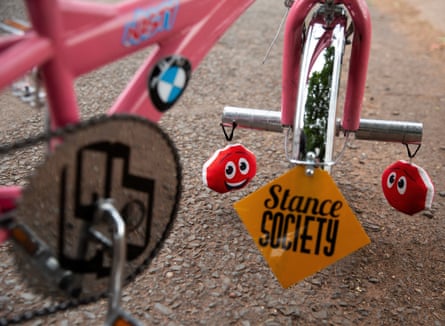

In recent years, children in Soweto started spinning on modified bikes. Crews of mainly teenage boys, such as Soweto Street Fighters and Bikerboyz, took over township streets, battling each another over their mastery of tricks including “doughnuts” (spinning in multiple circles) and “the kitchen” (pedalling quickly into a sharp 180-degree turn).
Often, two frames are welded together, with smaller wheels attached to make the bikes extra long and low-slung. Riders have to lean forwards to pedal in the lowrider stance that gives Stance culture its name.
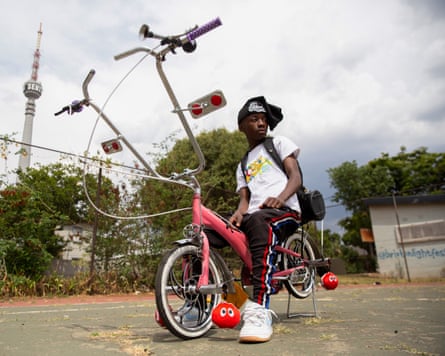
-
Lesedi Musima, of the Sentech Croozers bicycle club, in Brixton, Johannesburg.
In Brixton, a mixed income neighbourhood popular with artists, Percy Zimuto, 20, and Lesedi Mosima, 18, of the Sentech Croozers crew (named after a local telecoms tower), showed off their creations.
They had lowered 20in frames on to 16in wheels, then added silver mudguards and huge forward-tilted handlebars shaped like antelope horns. Zimuto’s bike was spraypainted bright red, while Mosima’s was salmon pink with a grinning evil clown mask attached to a large boombox. While frames cost as little as 50 rand (£2.15) at scrapyards, they can spend up to 3,000 rand on modifications.
“I saw Stance culture as a way to … have movement and art at the same time,” said Zimuto, the crew’s leader. “I felt like this was a way of actually getting to engage with more people, because this – it’s so different.”
Zimuto, a freelance photographer, founded the crew in 2018 after seeing spinning in Soweto. Most members left once they finished school, so he recruited 14 new Croozers, now aged 12 to 20.
Recent rides have included cycling 12 miles from Soweto’s FNB Stadium, through the old Central Business District, to the new business district towers of Sandton, which styles itself “Africa’s richest square mile”. The all-male crew has also featured in adverts for a bank, a telecoms company, clothing brands and KFC.
Zimuto said: “When I’m actually walking in the streets without my bike I’m just an ordinary person. But when I’m in the street with a bike it’s like, ‘Who’s that? Who are you?’”

.png) 5 hours ago
6
5 hours ago
6

















